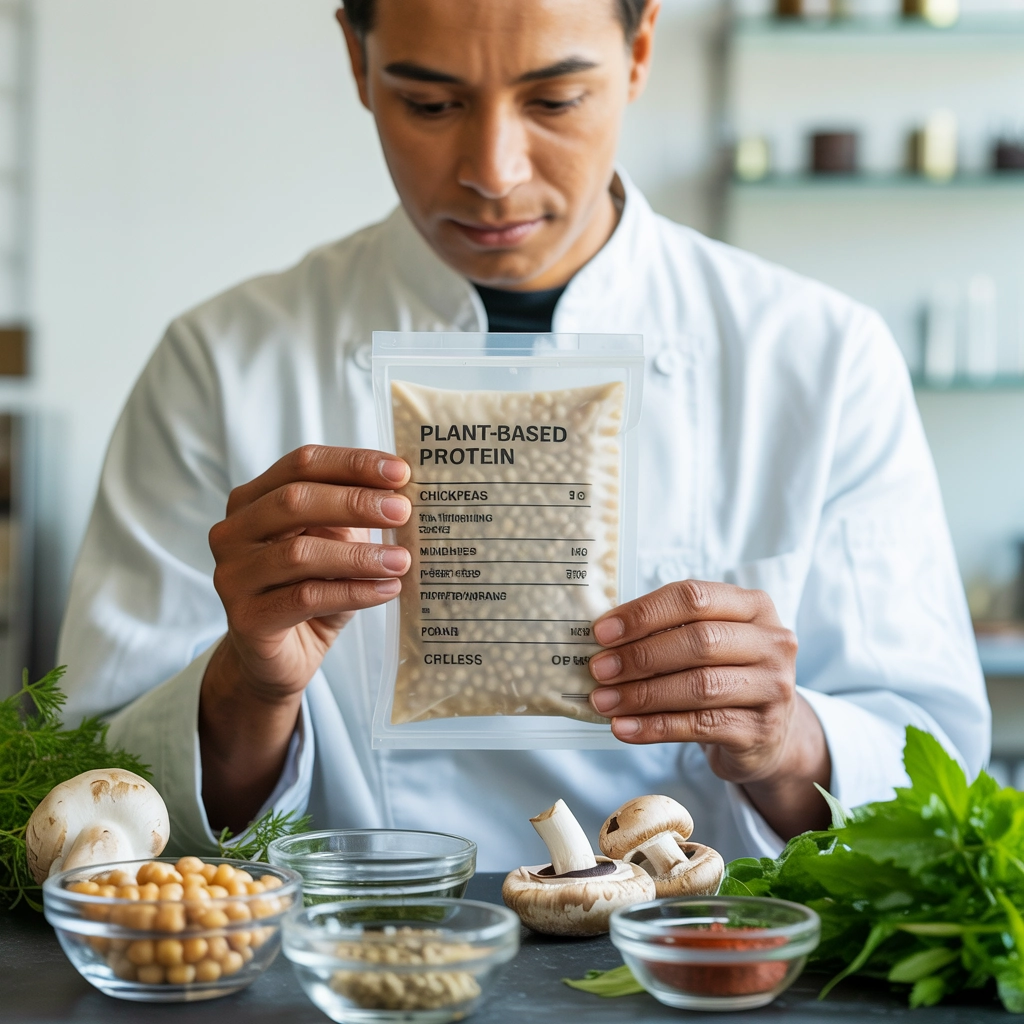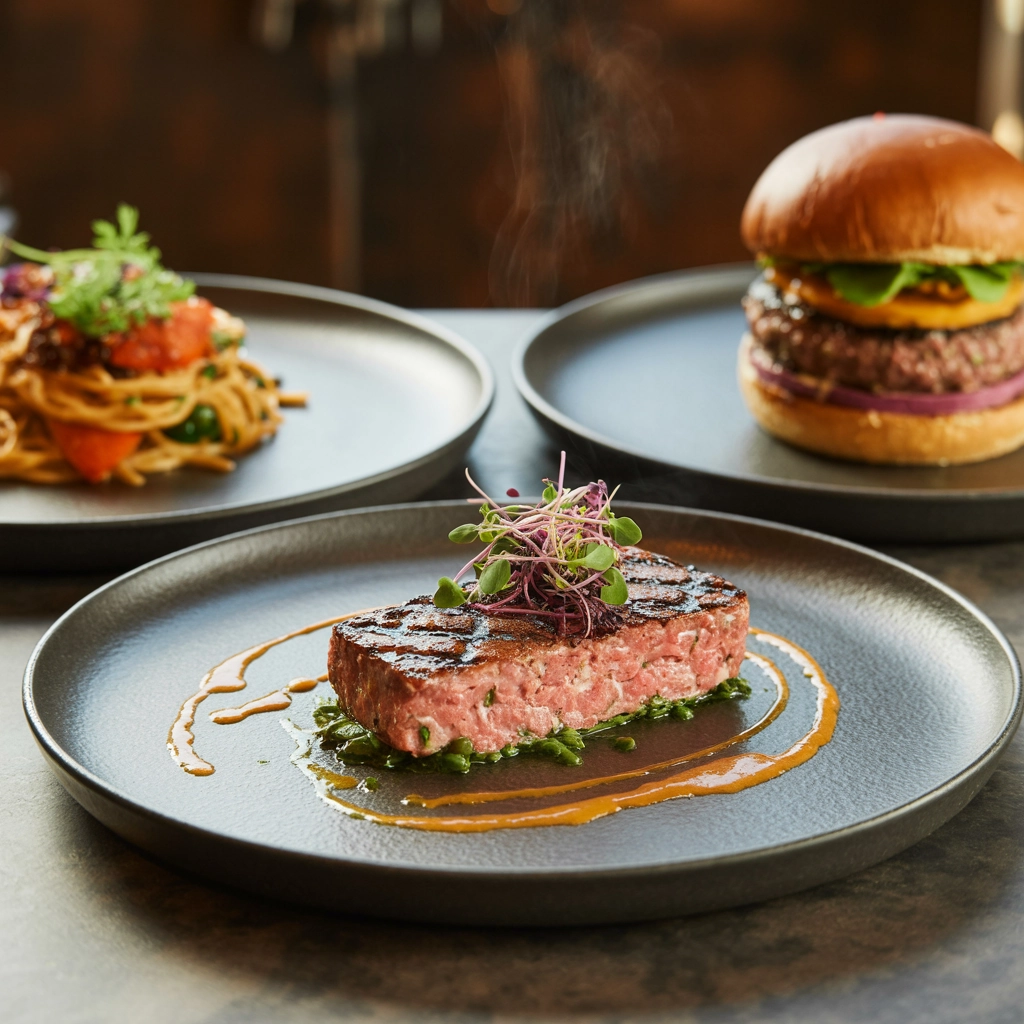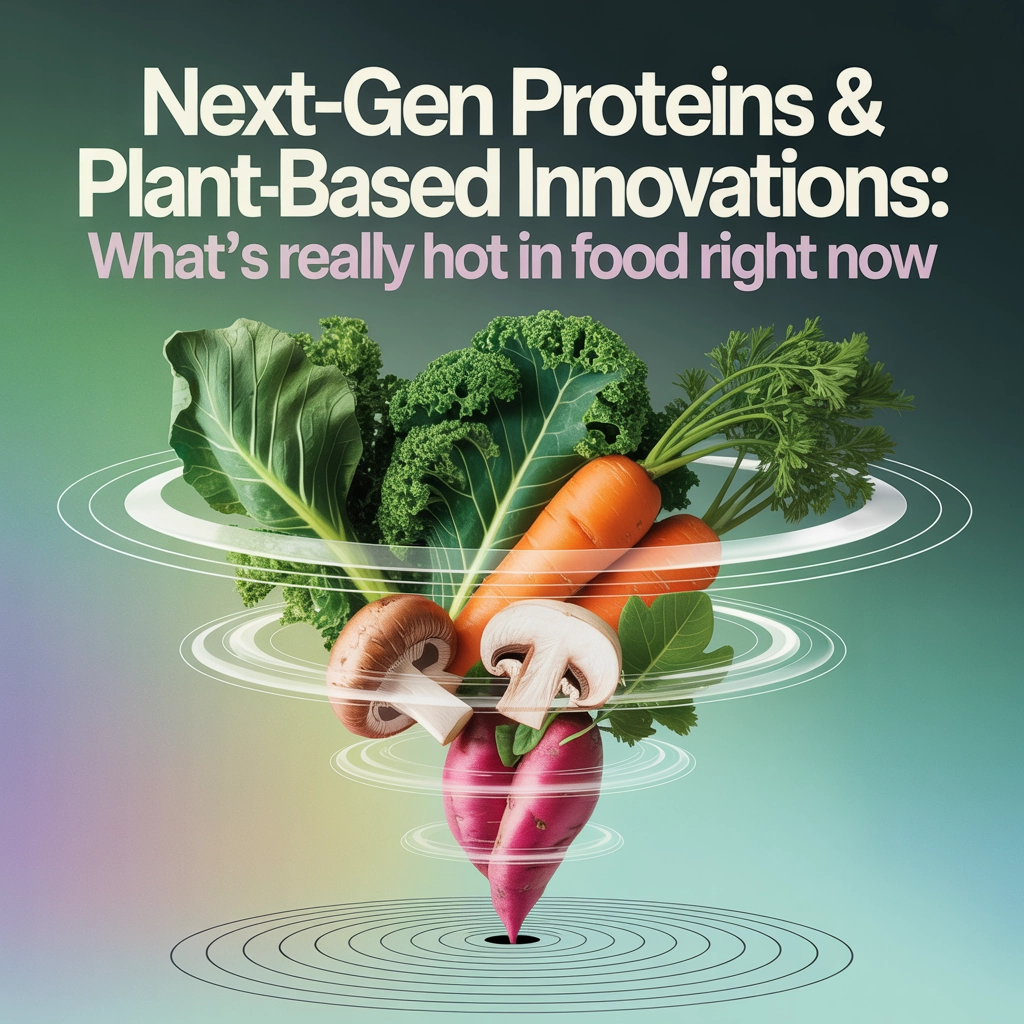The protein revolution is no longer coming—it's here, reshaping menus, product development, and consumer expectations across the food and beverage landscape. As we navigate 2025, the innovations in alternative proteins have moved beyond simple meat substitutes to sophisticated, nutritionally optimized ingredients that are changing how we think about food formulation. For restaurants, manufacturers, and culinary professionals, understanding these shifts isn't just trendy—it's essential for staying competitive.
The Protein Landscape Reimagined
The days of basic veggie burgers and soy-based alternatives are firmly behind us. Today's plant-based innovations are driven by sophisticated food science, consumer demand for cleaner labels, and the pursuit of authentic culinary experiences rather than mere imitation.
"We're witnessing a fundamental shift from 'plant-based 1.0'—which focused on mimicking animal products—to a more authentic approach that celebrates plants for their inherent qualities," explains Dr. Rachel Gutierrez, food scientist and product development consultant for several national restaurant chains.
This shift is reflected in the numbers: plant-based food sales have consistently grown 20-30% year-over-year since 2020, with particular acceleration in foodservice applications and ready-to-eat prepared foods.
Beyond Pea: The Diversification of Plant Proteins
While pea protein remains the dominant player in the plant-based space, the protein portfolio is rapidly expanding. According to recent industry data, we're seeing remarkable growth in these emerging proteins:
- Fava bean protein: Offers excellent gelling properties and neutral flavor profile
- Lentil protein: Provides complete amino acid profiles and familiar culinary applications
- Sunflower protein: Delivers allergen-friendly solutions with functional properties
- Chickpea protein: Combines versatility with consumer familiarity and cultural resonance
"Diversification isn't just about novelty—it's about solving specific functional challenges," notes Chef Marcus Wong of Octant Evora, who has been experimenting with these proteins in his Mediterranean-inspired menu. "Each protein source brings different solubility, texture, and flavor profiles that can be strategically deployed in different applications."

The Rise of "Blended Plantification"
Perhaps the most intriguing development is what industry insiders call "blended plantification"—hybrid products that combine animal and plant proteins to deliver improved nutrition, sustainability, and cost benefits without compromising on taste or texture.
Major players like Tyson Foods and Perdue have already launched blended product lines, while restaurant chains are incorporating the approach in everything from burger blends to sausages and prepared foods.
"It's not an all-or-nothing proposition anymore," says Michael Freeman, Culinary Director at Paso Robles. "We're finding that a 70/30 blend of beef and mushroom creates a more umami-rich, juicy burger while reducing costs and environmental impact. Our customers actually prefer it to our previous 100% beef option."
The approach is resonating with the growing "flexitarian" consumer base—those reducing but not eliminating animal products—which now represents over 40% of American consumers according to recent surveys.
Clean Labels and Transparency: Non-Negotiables
As plant-based options proliferate, consumer scrutiny of ingredient lists has intensified. The days of lengthy, chemical-sounding ingredient panels are numbered, with 73% of consumers reporting they avoid products with ingredients they don't recognize.
"The clean label movement has fundamentally changed formulation priorities," explains Dr. Amara Johnson, Head of R&D at a leading plant-based manufacturer. "We've replaced methylcellulose with natural fibers like chicory root, simplified extraction processes to avoid chemical solvents, and focused on minimal processing techniques."
This trend aligns with broader movements in the food and beverage industry, as highlighted in our recent report on bold flavors and clean ingredients reshaping menus.
Key clean-label strategies gaining traction include:
- Fermentation-based texturizers
- Enzyme-modified proteins for improved functionality
- Natural flavor enhancement through yeast extracts
- Physical rather than chemical modification techniques

AI-Powered Protein Innovation: "Generative ProtAIn"
Perhaps no force is accelerating protein innovation more dramatically than artificial intelligence. What industry insiders have dubbed "Generative ProtAIn" is revolutionizing how new proteins are discovered, optimized, and commercialized.
"AI algorithms can now predict how protein molecules will fold and function, allowing us to design novel proteins with specific attributes—whether that's enhanced gelation, emulsification, or nutritional profiles," explains Dr. Raymond Chen, founder of ProteinX, a food-tech startup using machine learning to develop next-generation ingredients.
The impact extends beyond the lab. As explored in our coverage of AI revolutionizing demand forecasting, these technologies are helping companies understand changing consumer preferences and optimize product development cycles.
The result? Plant-based products moving from concept to commercialization in months rather than years, with more precise targeting of sensory attributes and functional properties.
Culinary Applications: Where Science Meets Artistry
For chefs and food manufacturers, these innovations are opening new creative possibilities. At Delta Hotels Virginia Beach Bayfront Suites, Executive Chef Antonio Rivera has been pioneering plant-forward menu items that leverage these next-gen proteins.
"We're using pea protein in our vegan crab cakes, fava protein in our house-made pasta, and a mushroom-beef blend in our signature burgers," Rivera explains. "The critical difference is that we're designing these dishes to be delicious first, sustainable second—not the other way around."
This culinary-first approach is evident in emerging menu trends:
- Whole-muscle plant proteins featured as center-of-plate options
- Fermented plant proteins adding complexity to sauces and condiments
- Blended approaches in classic comfort foods
- Global culinary traditions informing application development

Beyond Imitation: The New Authenticity
Perhaps most significantly, the industry is moving beyond the imitation phase. Rather than trying to create perfect replicas of animal products, forward-thinking companies are developing plant-based foods that celebrate their plant origins while delivering satisfying culinary experiences.
"The most exciting innovations aren't trying to be something they're not," observes culinary trend forecaster Elena Vega. "Instead of another plant-based chicken nugget, we're seeing watermelon seed protein transformed into a uniquely textured ingredient that works brilliantly in its own right."
This authenticity-focused approach is visible in recent product launches that emphasize:
- Unique textural properties specific to plant proteins
- Bold, globally-inspired flavor profiles rather than bland imitations
- Clean, minimalist ingredient lists
- Transparent sourcing and processing methods
As detailed in our recent feature on upcycling revolutionizing menus, many companies are combining these protein innovations with sustainable sourcing practices to create truly differentiated offerings.
Strategic Recommendations for Industry Professionals
For food and beverage professionals looking to capitalize on these trends, consider these actionable steps:
- Explore blended approaches as an entry point that can satisfy both traditional and plant-forward consumers
- Invest in culinary R&D specifically focused on plant protein applications
- Partner with emerging suppliers to access next-generation ingredients before competitors
- Highlight transparency in sourcing and processing on menus and packaging
- Consider global culinary traditions that have historically featured plant proteins for inspiration
"The most successful operators won't just add plant-based options to their lineup—they'll rethink their entire approach to protein," predicts James Harrington, sustainability director for a major foodservice distributor. "This isn't a temporary trend; it's a fundamental transformation of our food system."
Looking Ahead: The Next Frontier
As we move forward, several emerging technologies promise to further revolutionize the protein landscape:
- Precision fermentation creating animal-identical proteins without animals
- Mycelium-based structures providing unique whole-cut textures
- Microalgae cultivation offering complete protein with minimal resources
- Bioprinted protein structures enabling unprecedented textural control
These innovations will be showcased at upcoming industry events like the ProWine Mumbai where food and beverage pairings increasingly feature next-gen proteins.
For the food and beverage industry, the protein revolution represents both challenge and opportunity. Those who embrace these innovations thoughtfully—balancing nutrition, sustainability, and above all, deliciousness—will find themselves well-positioned to meet evolving consumer demands and build more resilient businesses.
What plant-based innovations are you implementing in your operation? Share your experiences in the comments below, or reach out to our team to discuss how these trends might impact your specific segment of the industry.
Written by Michael Politz, Author of Guide to Restaurant Success: The Proven Process for Starting Any Restaurant Business From Scratch to Success (ISBN: 978-1-119-66896-1), Founder of Food & Beverage Magazine, the leading online magazine and resource in the industry. Designer of the Bluetooth logo and recognized in Entrepreneur Magazine's "Top 40 Under 40" for founding American Wholesale Floral. Politz is also the founder of the Proof Awards and the CPG Awards and a partner in numerous consumer brands across the food and beverage sector.








